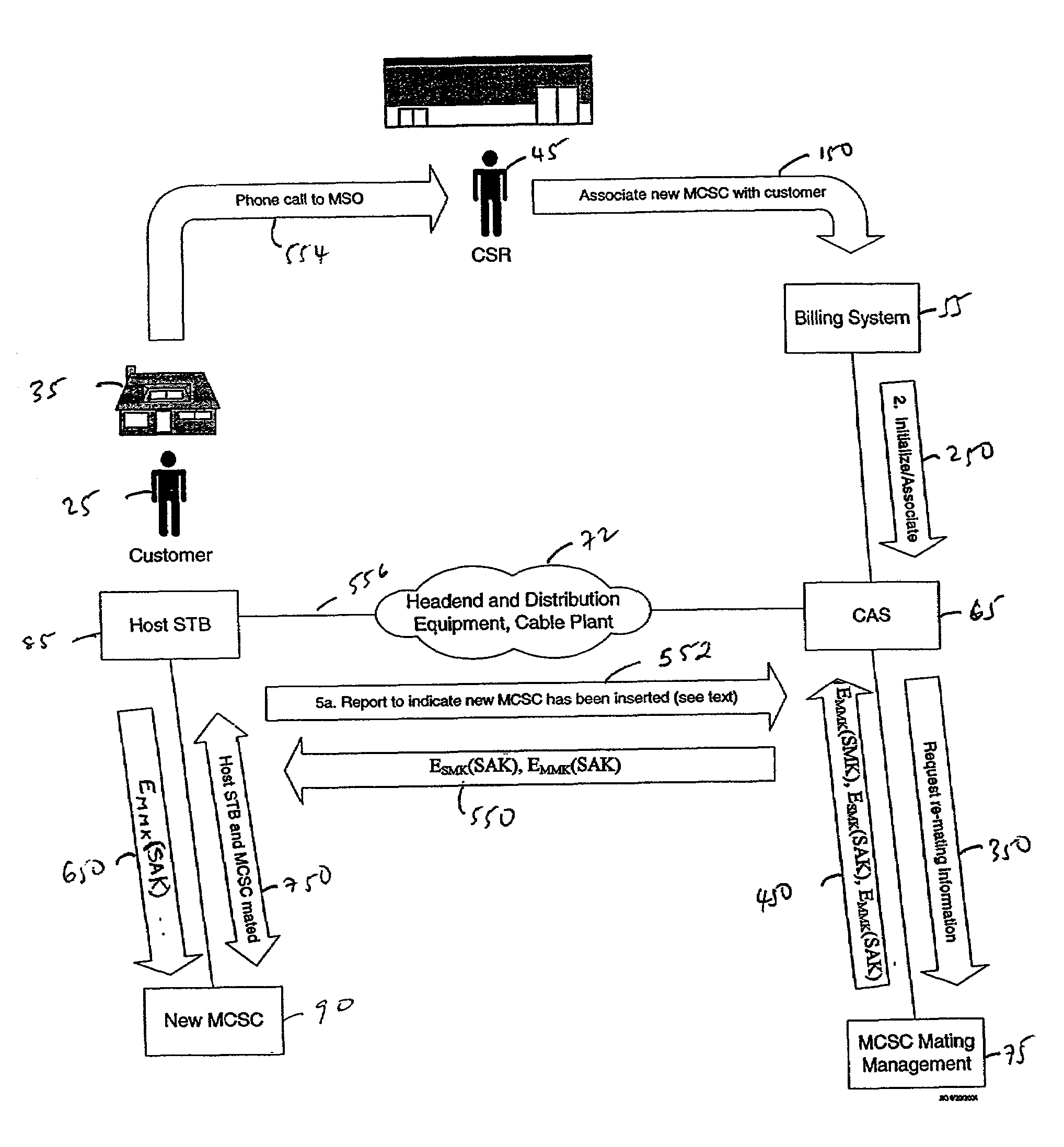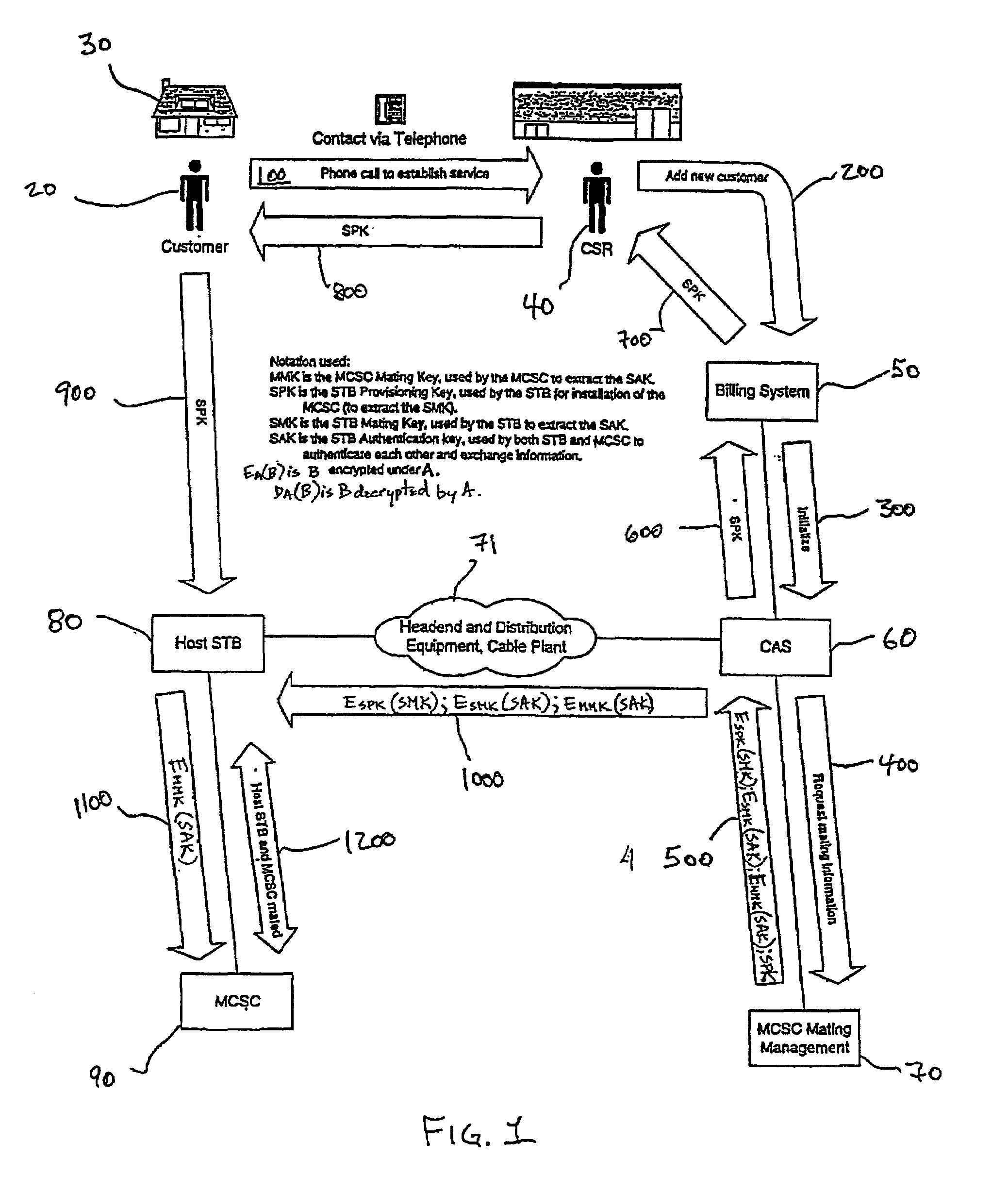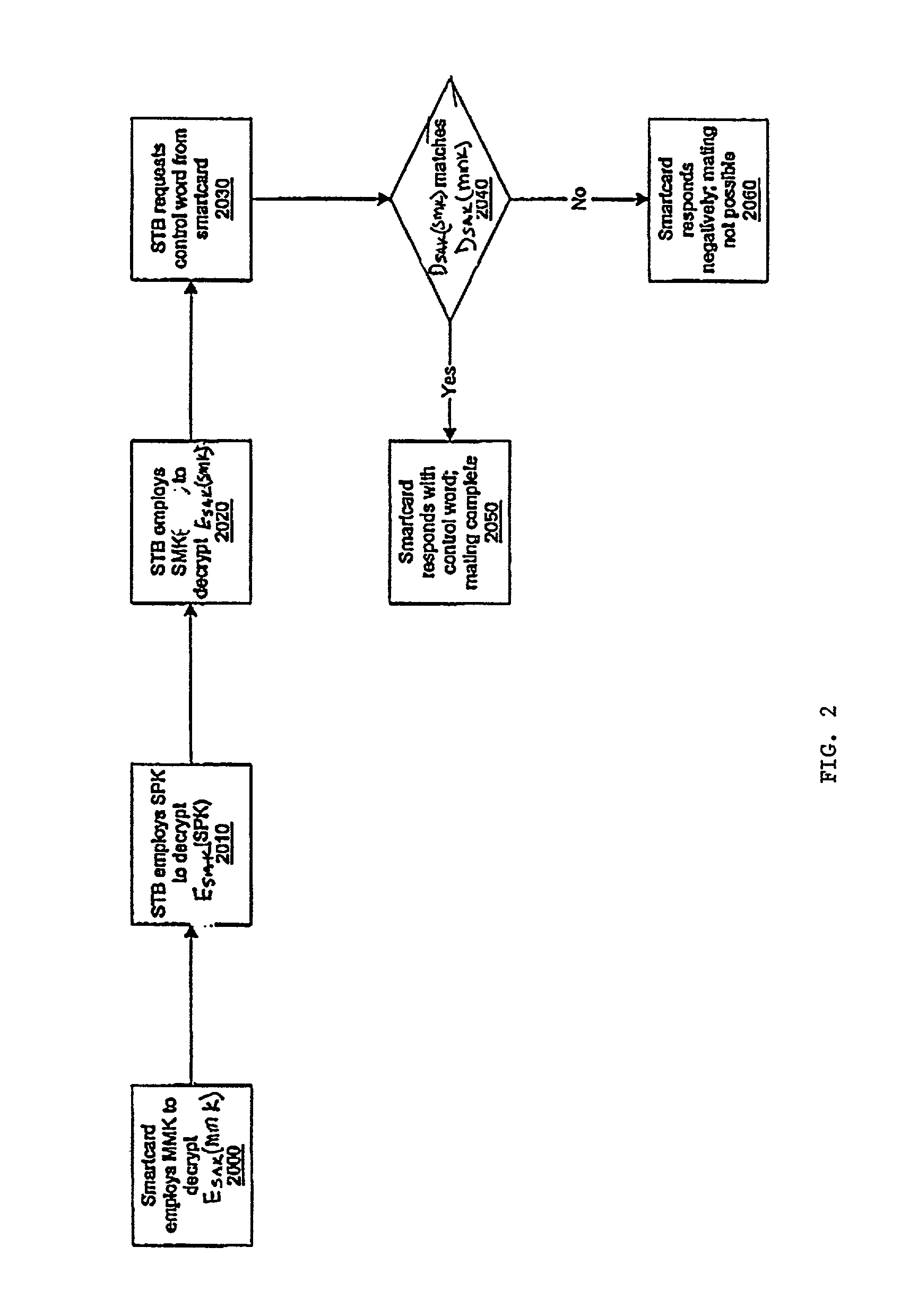Smart card mating protocol
a technology of smart cards and mating protocols, applied in the field of communication systems, can solve the problems of msos (multiple system operators), typically not fast enough to perform the actual decryption of content, etc., and achieve the effect of preventing piracy of exchanged information
- Summary
- Abstract
- Description
- Claims
- Application Information
AI Technical Summary
Benefits of technology
Problems solved by technology
Method used
Image
Examples
Embodiment Construction
[0024]The initial in-home mating process employing principles of the present invention commences when a customer inserts a smartcard into a host STB (set top box) for the first time and contacts the MSO (multiple systems operator) to enable services. In such case, the host STB is assumed not to have any stored information about the smartcard, previous to smartcard insertion.
[0025]FIG. 1 is a high-level schematic flow diagram illustrating initial smartcard-STB mating according to principles of the present invention.
[0026]The commencement of the illustrated mating process is premised on a customer 20 having obtained and installed the host STB 80 in a viewing locale 30 such as a residence or place of business. The customer has obtained a smartcard from an MSO via postal mail, retail distribution, or other delivery means known in the art. Each such smartcard is identified by a unit address and carries a smartcard mating key (MMK) that is preferably associated with the smartcard at the t...
PUM
 Login to View More
Login to View More Abstract
Description
Claims
Application Information
 Login to View More
Login to View More - R&D
- Intellectual Property
- Life Sciences
- Materials
- Tech Scout
- Unparalleled Data Quality
- Higher Quality Content
- 60% Fewer Hallucinations
Browse by: Latest US Patents, China's latest patents, Technical Efficacy Thesaurus, Application Domain, Technology Topic, Popular Technical Reports.
© 2025 PatSnap. All rights reserved.Legal|Privacy policy|Modern Slavery Act Transparency Statement|Sitemap|About US| Contact US: help@patsnap.com



